Walk through any major city and you’ll see vacant land. These are the weed lots, garbage strewn undeveloped spaces, and high crime areas that most urban residents consider blights on the neighborhood. In some cases, neighbors have organized to transform these spaces into community amenities such as shared garden spaces, but all too often these lots persist as unrecognized opportunities for urban improvement. In densely populated cities with sometimes few opportunities for new park or green space development, small vacant lots could provide green relief, especially in low-income areas with reduced access to urban parkland. (You can read the academic paper on this research here.)
And yet, few cities are taking advantage of these underutilized spaces to improve urban biodiversity and provide additional ecosystem services. What’s even more surprising is the vast amount of urban land that is categorized as vacant. Take New York City for example: in this urban metropolis there are 29,782 parcels designated by the city tax code as vacant within the city boundaries, not counting vacant land in the surrounding suburbs and exurbs. This totals more than 7,300 acres of land that could be providing important social and ecological benefits for urban residents.
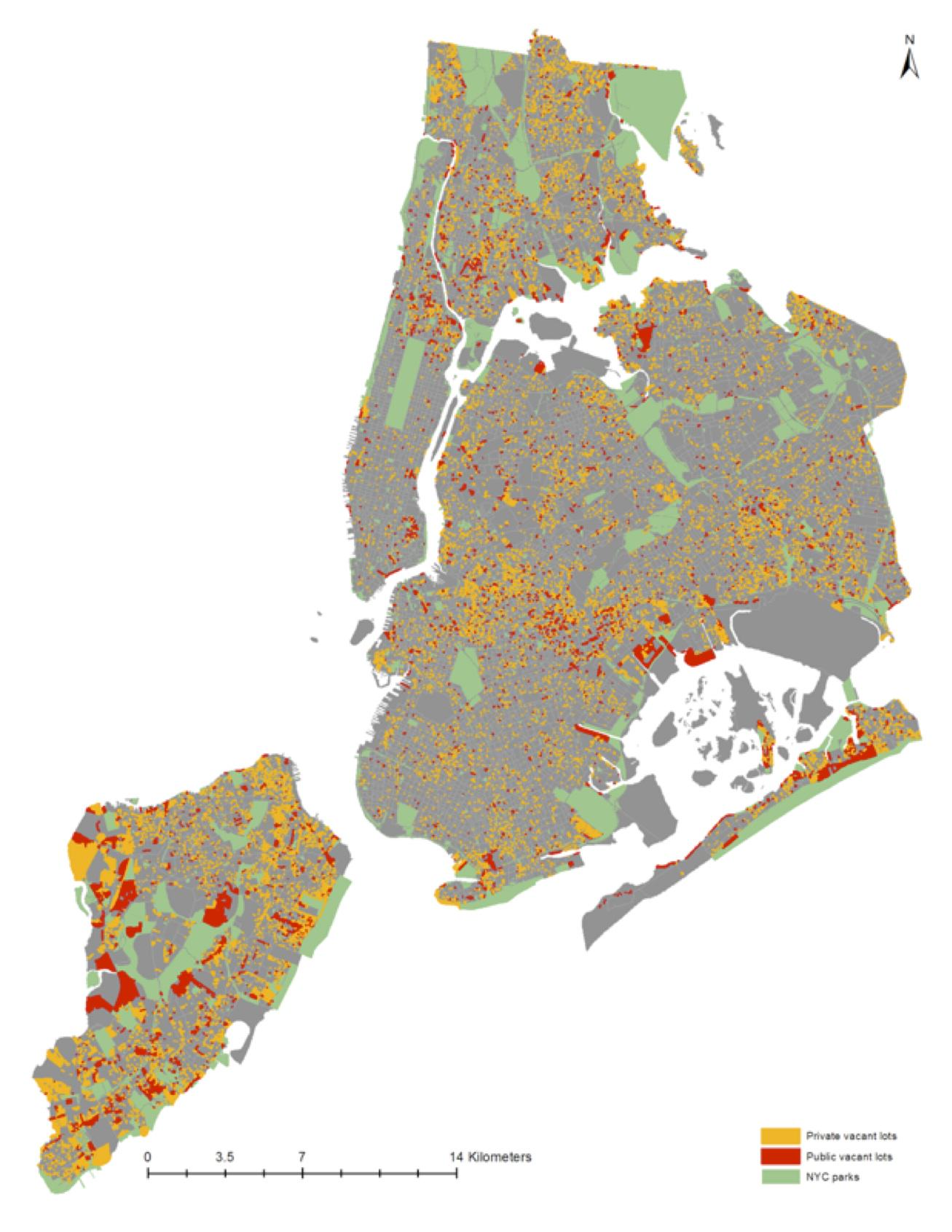
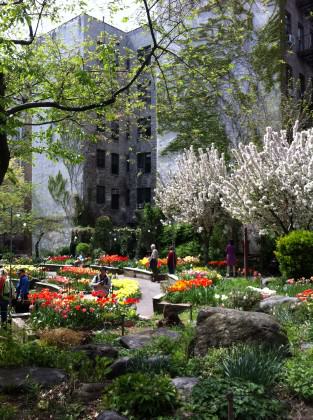
Here is what we know: Local and regional urban ecosystems provide important services that urban residents rely on for daily living. For example, ecosystems can supply clean water, produce food, absorb air pollution, mitigate urban heat, provide opportunity for recreation, decrease crime, and more. A recent publication from TEEB (The Economics of Ecosystems and Biodiversity) details the list of ecosystem services that can be provided by urban ecosystems.
And yet, all cities do not have the same level of food production, clean water supply, or air pollution removal. Different levels of ecosystem services among cities are due to a myriad of reasons. However, research is beginning to make clear that to improve urban sustainability and resilience city planners and policymakers need to strategically develop and manage the ecological resources within the city to meet the needs of expanding urban populations.
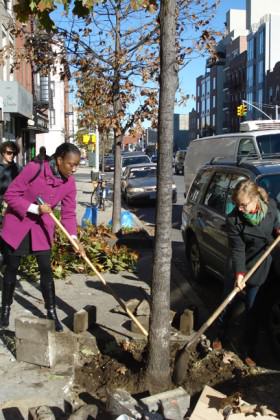
To improve the quality and quantity of ecosystem services that cities can reliably depend on, and given the financial difficulties most cities are facing, we need to find the low cost investment/high rate of return urban spaces where urban biodiversity and ecosystem services can be improved. These have to be spaces where people can interact with people (a component of ecosystems) and where people can interact with other components of ecosystems (air, soil, water, plants, animals). It’s also important for us to better understand urban people-nature dynamics (also termed social-ecological dynamics), which are about how interacting social and ecological components of ecosystems change over space and time and, for me anyway, understanding what these changes mean for future urban sustainability and resilience.
Lots of vacant land
One of the results of rapid population shifts in cities is the abandonment of previously occupied land. You can see the effects of this in older cities just by walking around. It is nearly impossible not to find land that is vacant in a city, regardless of whether you are in New York, Berlin, Sao Paulo, Shanghai, or Jerusalem. Vacant land typically results from human migration, deindustrialization, environmental disaster, decreased birth rates or contamination, and occurs at various concentrations in cities across the world. Though all cities have vacant land, some have more than others. In some cities the amount of vacancy is tremendous, such as in Detroit, Michigan (USA) where nearly one third of the city is vacant land.
So, why am I so captivated with these overlooked, unmanaged, vacant spaces in cities, especially considering that they are not the most pleasant places in which to conduct research? For one simple reason: vacant, underutilized land has the potential to provide cities with opportunity to create and develop new ecosystems that support biodiversity and increase the provisioning of vital ecosystem services for urban residents. Vacant land is ripe for transformation into more sustainable, resilient urban forms. I’m not the only one who is thinking along these lines. Urban ecologists have long recognized that the ecology in the city is not relegated to parks and protected natural areas, but exists everywhere: on rooftops, in sidewalk cracks, in backyards, in soils, rivers, and streams, in narrow green islands between streets, and also in vacant land areas.
[Interesting side note: Urban ecology as a discipline basically started with the study of plant communities on vacant land in European cities. Urban botanists in Berlin and other European cities studied the response of urban plants on “ruderal” bombed sites following World War II. These vacant sites, often consisting of rubble from destroyed buildings, provided warm, dry conditions for locally adapted plants to occupy.]
Researchers have noticed that vacant land in cities is created by a variety of urban processes, including deindustrialization, demographic and preference-based residential shifts, suburban expansion, and relocation of the work force. When my lab at The New School in New York City reviewed the literature, we noticed that the proportion of vacant lot area to total land area in large U.S. cities is relatively persistent, especially along the East Coast and Midwest of American cities, and remarkably, does not appear to be related to population growth.
Vacant lands constitute a large fraction of urban land area. In fact, vacant land in U.S. cities of more than 100,000 people varies between 19 and 25% of total land area — our research papers are in review in journals now — while for cities with populations greater than 250,000, vacant land makes up between 12.5 and 15% of total land area. The fact that the proportion of urban vacant land is fairly persistent in spite of population growth implies that vacant land may be a lasting phenomenon in urban areas, at least in the United States, and suggests that we need to be doing a lot more to manage these spaces to meet the current and future needs of urban nature and urban residents.
Vacant lots as opportunities
Another persistence is the way people tend to think about vacant lots: as areas associated with crime, abandonment, depressed real estate values, trash, overgrown weeds, pests, and general economic and/or social failure. Most people consider vacant lots to be negatively impacting community vitality.
I want to offer a challenging perspective, which is that we begin viewing vacant lots as opportunities for land use transformations that can contribute to community development. Vacant land in cities could provide important social and ecological benefits, including habitat for biodiversity, provisioning of ecosystem services, and new green space for residents in underserved neighborhoods of the city.
Given global urbanization trends compounded by the effects of climate change and other environmental pressures that are fast approaching or even exceeding planetary boundaries, one could argue that the primary dynamic that must be understood for increasing urban sustainability and resilience is the social-ecological relationships between humans and urban ecosystems.
Most humans are urban residents now. Which means, if you grow up in a city, your understanding of, and connection to, nature comes through interaction with urban nature. So, what is the state of our urban nature? Is it up to the task? Future decisions about how we steward our planet will likely be made by urbanites. What will their view of nature be? We don’t have answers to these questions yet, though the U.N. Convention on Biological Diversity has recently launched a series of comprehensive publications to try to get a handle on the state of urban nature. However, many of us in the field of urban ecology and related disciplines would probably argue, first, that there is already amazing nature in cities, and second, that this nature is often overlooked, under-managed, misunderstood, abused, neglected, or wiped out for development. In any case, if we can agree that the current state of urban nature is not necessarily the ideal state for increasing the connectedness between people and ecosystems and for providing high quality urban living environments for human well-being, then where are the opportunities for making improvements?
Clearly, vacant land is an opportunity, and it’s time to seize it.
The benefits of vacant lot transformation
Here is a short list of the potential benefits that small investments to transform vacant land into more useful spaces could provide to cities:
- Stormwater absorption
- Air temperature regulation
- Wind speed mitigation
- Air purification (pollution absorption)
- Carbon absorption
- Flood control
- Habitat for biodiversity (e.g. plants and pollinators)
- Green corridors between urban natural areas
- Recreation space
- Community garden space
- Social gathering space
- Temporary art installation space
- Crime reduction
- Noise reduction
- Neighborhood beautification
- Increased adjacent property value
- Sense of place
- Environmental education opportunity
- Sense of well-being
- Green spaces for low-income neighborhoods
- Residential and commercial building energy savings
However, the full ecological potential of the urban environment, especially in vacant land areas, is just beginning to be understood.
Some U.S. cities are beginning to get the idea. In Baltimore, Maryland, a city leading the way in urban ecological research by way of the long-term Baltimore Ecosystem Study, vacant land has been considered from the perspective of pockets for urban plant diversity. In Brooklyn, New York a non-profit group, 596acres.org, has mapped all the vacant lots in Brooklyn and is working with local neighborhood communities to turn these spaces into gardens; places not only for growing food, but also as social spaces for neighborhood residents. In Detroit, citizens, farmers, and entrepreneurs are turning vast amounts of vacant land into urban farms. And in Philadelphia, when researchers cleaned up and greened vacant lots, the crime rate fell.
At The New School in New York City, post-doctoral fellow Peleg Kremer and PhD candidate Zoé Hamstead have been working with me to map vacant lots to understand the social and ecological value of these spaces. Our goal has been to understand the combined value of urban vacant land in order to illuminate overlooked spaces in the city where policy and planning could simultaneously meet goals for biodiversity habitat, ecosystem services provisioning, and social justice. This work (currently in review for publication) shows that, at least for New York City, vacant lots are already providing a host of cultural, provisioning, and regulating ecosystem services.
For example, we were a bit surprised to find that most vacant lots are already relatively green. Trees, shrubs, and herbaceous plants dominate the vacant lots we sampled. On the other hand, there were many vacant lots located in lower income areas where people lived with fewer parks and other green spaces, neighborhoods where existing vacant lots could be actively managed to provide new green infrastructure to meet community needs.
“Develop Differently”: If you have lemons, make lemonade
It’s interesting to look at just how many vacant lots cities have. Perhaps you should take a look at the tax code in your city to see how many spaces tax assessors identify as vacant?
In New York City, there are nearly 30,000 sites identified as vacant lots. Numbers like these demonstrate the vast potential for providing ecosystem services and new urban biodiversity habitats. But a significant requirement in making these services possible over the long term is to assure they are planning and management priorities, both at the city and neighborhood level.
Currently, there is very little management of urban vacant land. Since most vacant lots in New York are small (<500m2), they may not be easily developed into more traditional built infrastructure such as housing, retail, or other typical uses. Lots that are small in size or otherwise make development challenging present ideal opportunities to develop differently, by enhancing or preserving urban green infrastructure. Land that is topographically-challenging, for example, may be well suited as nature preserves, or oddly shaped lots may serve as greenways or small pocket parks with public access. Land near existing rail or other transportation corridors where other types of development are unlikely may serve as portions of greenways with pedestrian and bike access.
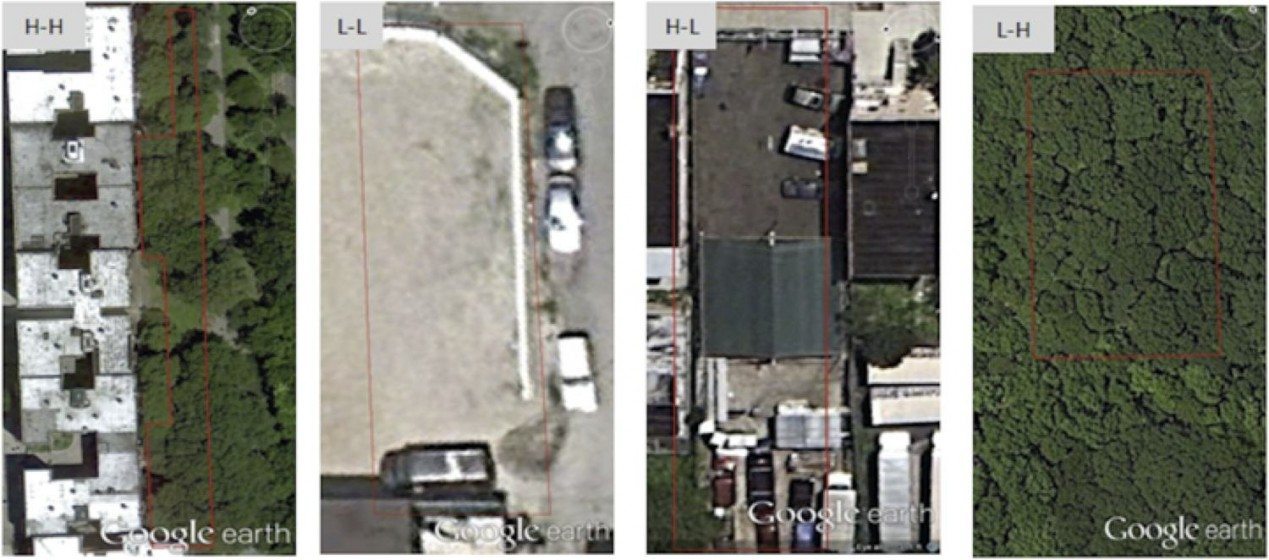
It is common to find vacant lots in both low and high-density residential areas. Some may be small lots, located in the middle of rows of low-rise and low-density residential streets. Others, as in the example of a New York City community garden in the photo below, are part of higher density residential area. The lot on the far left in the image above representing tree cover within a residential context serves as an example of the importance of the location context and spatial distribution of vacant lots. In this case, the relatively high ecological quality (e.g. green) vacant lot is immediately adjacent to a low-income, high population density neighborhood. This lot is also next to a large public open space (not shown) and provides a connection between open space to the southeast and street trees to the northwest. Such connections are crucial in the maintenance and provisioning of ecosystem services, as well as the maintenance of biodiversity that supports ecosystem services in cities. Vacant lots could serve as corridors and connectors between fragmented urban green spaces, improving the ability for species to migrate between the built infrastructures of the city.
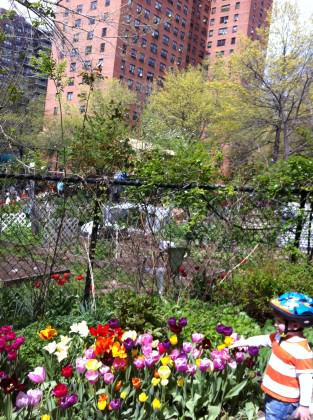
The temporal perspective is also important to consider in addition to the spatial. For example, even if there is planned development for a particular vacant parcel, we should be considering the option of utilizing vacant lots — in the short, medium and long terms — as urban nature sites that provide and support ecosystem services. In a 2002 Planners Advisory Report of the American Planning Association (506/507 Old Cities/Green Cities: Communities Transform Unmanaged Land. J. Blaine Bonham, JR., Gerri Spilka, and Darl Rastorfer. March 2002. 123pp), the authors suggest that vacant land slated for eventual redevelopment should serve interim beneficial uses such as community gardens, wildlife gardens, public plantings and recreational areas so as to avoid the common blighting influence on the surrounding community. Community gardens, open spaces and other urban greening sites provide important cultural value in addition to ecological amenities such as food, air quality improvement and stormwater mitigation.
To develop differently, we need to plan and design urban spaces where ecological and cultural value can be intertwined. Importantly, as communities transform low quality landscapes into community gardens or other sites of community engagement, more resilient communities may emerge; communities that are better equipped to deal with future urban stresses. Community engagement that involves ecological resources may, in turn, perpetuate the development of ecosystem services and enhancement of community cultural amenities that continuously build both social and ecological resilience through a virtuous cycle. In this way, transformation of vacant land may provide an opportunity for enhancing the resilience of coupled social-ecological systems in urban areas.
There is still work to do to understand in detail how to best to use the cache of vacant land that cities have. Ecologists and social scientists could be very useful to planners, designers, and policymakers who are interested in transforming blighted urban spaces into social and ecological amenities. For example, differentiating vacant lot types according to how they are actually used, even if their use is temporary, can help planners identify target areas for improvement, as well as indicate possibilities for land transformation. Similarly, by assessing the size, location and shape characteristics of vacant lots, planners may be able to identify suitable spaces for various community purposes.
For instance, small, oddly-shaped lots along roadways with foot traffic may be best developed as pocket parks, while larger lots adjacent to residential buildings may be better suited for urban agriculture or neighborhood parks. Because most vacant lots are in residential areas, they can serve as spaces for community activities where people live, thus creating the potential to support neighborhood improvement and community engagement. Essentially, vacant lots could provide opportunity for developing social capacity at the same time that they provide new urban ecological infrastructure.
Frankly, vacant land has been overlooked for far too long. If cities were to invest in the social-ecological transformation of vacant land into more useful forms, they would be creating the potential to increase the overall sustainability and resilience of the city. Depending on the kinds of land transformations urban planners and designers dream up, vacant land could provide increased green space for urban gardening and recreation, habitat for biodiversity, opportunities for increasing water and air pollution absorption and many other regulating, provisioning, and cultural ecosystem services.
Community gardeners across the world have capitalized on the opportunities of urban vacant land for decades, and the rest of us should too.
Timon McPhearson
New York City
USA
For more information see:
McPhearson, Timon, Peleg Kremer, and Zoé Hamstead. “Mapping Ecosystem Services in New York City: Applying a Social-Ecological Approach in Urban Vacant Land.” Ecosystem Services (2013):11-26 http://dx.doi.org/10.1016/j.ecoser.2013.06.005
Kremer, Peleg, Zoé Hamstead, and Timon McPhearson. “A Social-Ecological Assessment of Vacant Lots in New York City.” Landscape and Urban Planning (2013): 218-233 http://dx.doi.org/10.1016/j.landurbplan.2013.05.003
About the Writer:
Timon McPhearson
Dr. Timon McPhearson works with designers, planners, and local government to foster sustainable, resilient and just cities. He is Associate Professor of Urban Ecology and Director of the Urban Systems Lab at The New School and Research Fellow at the Cary Institute of Ecosystem Studies and Stockholm Resilience Centre.

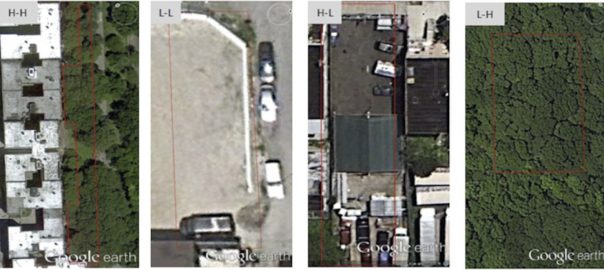





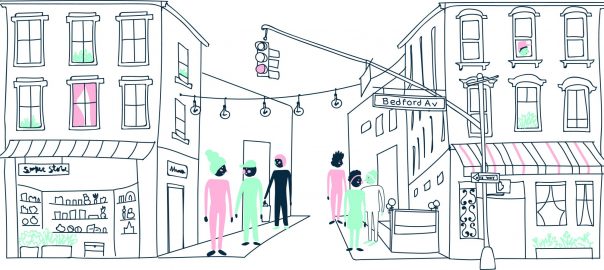
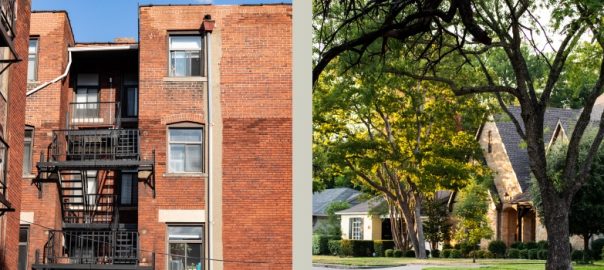
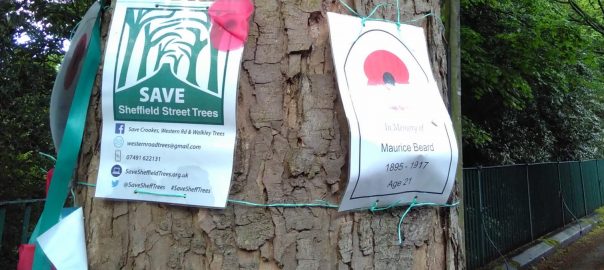
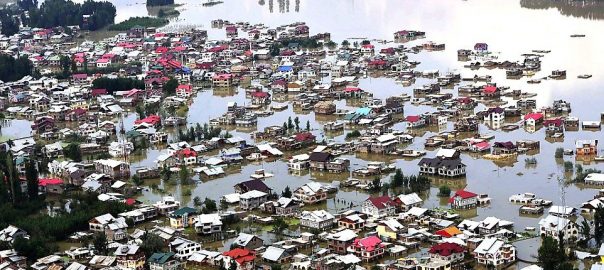

Very useful article for leveraging vacant lands in cities.
Use of Vacant Land Plot is very constructive as their are many option to go with land plot.People now a days sale their land and plot to builder so that they can make a big building of many floor to earn profit.In Mumbai their is culture of selling plot and land to builder and in return they get apartment in particular building.Their are many option of Apartments for Sale in mumbai! and in other city.
Numerous individuals battle to see the viable applications and advantages of crude land, however with a smidgen of innovative considering, there is a VAST universe of chance for the individuals who are keen on getting to be land proprietors.
A very good cited article. Actually all around the world cities has a lot of vacant lands that when utilized, something better can come out of these vacant lands.
Tell that to the bureaucrats at city-halls all over the world…
It seems to be working fine.
Hmm is anyone else encountering problems with
the pictures on this blog loading? I’m trying to find out if its a problem on my end or if it’s the blog.
Any responses would be greatly appreciated.
That is right it is observed also in our country, I am from Ethiopia and now I am a masters student in Ethiopian Civil Service University Institute of Urban Development Studies, Department of Urban Land Development and Management and i am working my thesis (research) on the impact of vacant land on urban development because of the case is most dangerous in our country. So I need your suggestion please. Thanks .
E.Mail- [email protected]
Absolutely love the integration of GIS in this paper. I never really thought of vacant lots in terms of ecological benefits. But at a City scale it makes serious sense. Especially in built up core areas, every bit of green space matters.
These papers will be great in the hands of urban planners. Quantifiable benefits are always helpful in complex social / economical / environmental land use arguments.
Thanks for giving me a different way to look at urban Ag! I’ll definitely look up your other papers. Cheers!
Planning for change, adapting to change in a diverse lens is always a struggle for planners, thus it is not surprising to hear the statement, “vacant land has been overlooked for too long.” It is a responsibility of planners to create something economically viable on these vacant parcels, but also contribute to the community if possible. Unfortunately, the economic viability tends to win out in a structural form, or otherwise the parcel remains neglected and as time has shown the vacant parcels have multiplied. Planners are adapting, but arguably not as quickly as desired. Going along with Timon’s idea, my thoughts are to conduct a survey of the vacant parcels in a community by size and years left vacant to establish a policy or long term approach that standardizes the renewal of vacant parcels. Comprehensive planning concerning vacant lands could offer a large scale top-down solution. In many cities, zoning incorporates specific land use such as holding zones for the purpose of future development; an example in Auburn, Alabama the City has land zoned as “holding” for future campus development by Auburn University. Could a more accurate zoning approach to vacant land be helpful? A focused solution such as community gardens and temporary art exhibit space has proven more successful and makes vacant land viable by adding community interaction, civic space, and favorable neighborhoods. Redefining viability would be crucial to the success of this approach. Therefore, the “form” of viability of the vacant parcel can be determined through the zoning by its location, size, and length of vacancy. Then the “need to plan and design urban spaces ecological and cultural value can be intertwined”, a Timon stated, can be part of the planning policy. In addition, this approach can help protect the biodiversity created on these parcels through policies and regulations that keep the use similar over time.
Lastly, another thought , along the same lines as my fellow Professor Ward, could planners begin to integrate the ideas of rightsizing communities through the evaluation of the constructive use of these vacant parcels and return some of the vacant land to the wilderness, forest, coastline, etc? Rightsizing is becoming a greater issue in many American cities, predominantly those in the Rust Belt, where the land vacancy is so high due to large population decreases. Another perspective when considering vacant land is the return of that land to its natural habitat over time. Ideally, this would create smaller, more dense, but hopefully more vibrant cities that have close and planned public access to the natural countryside.
Thank you for the nice comprehensive treatment of a worthwhile idea. I wonder how these spaces can be linked to more effectively promote natural systems, although it is early days to be too caught up in this.
In my own city of Charleston, SC and a lot of other coastal areas, there may well be opportunities to talk about constructive uses for abandoned land as the various properties are damaged after hurricanes and people find that they cannot rebuild. Does this land lie fallow or can it be used constructively to try to absorb run off and help with the drainage issues of the remaining properties. That would be logical; however, history here usually has been for richer folks to move in (folks who do not need insurance) and that is the end of it.
So that leaves me with an interesting if academic question…might these ideas be coupled with a strategy to withdraw from the ocean as sea level rises?
I live in Ventura county, CA and what I see in both Oxnard and Ventura and other neighboring cities is of course vacant land that is owned by someone who would rather sell out to an investor building yet another not needed discount store, etc. rather than let the land be used for the common good. How do city governments get around that sticky issue? Would the city buy the parcel and if so where do they get the funding since many cities here in CA are hurting big time from both a recession and misspent funds by greedy politicians.
Hi Chris,
It’s true there is a lot of vacant land transformation going on. I’m quite familiar with many projects. The community garden movement in cities since the 1980s has basically been the model for this. However, the examples you mention and the host of examples I’ve studied, as wonderful as they are, are a small fraction of the actual land area that is in vacancy. Around the world people look at the community gardening movement in New York as a model, as they do in Havana, Cuba, but community gardens make up a tiny, tiny fraction of the vacant land.
What’s even more interesting is the actual use of vacant land. What I didn’t have space to get into is the fact that a lot of land is actually being used by people, though technically vacant, it’s not exactly unused. But again, a small fraction of the population living in and around these spaces are actively using them, for the most part because they aren’t that useful for people.
How do we scale up the examples you are championing? I’m interested in the larger scale effort at making better use of the spaces, as well as the local movements. Even where we see beneficial social uses such as a parking lot, or backyard play area for a single family home, one can imagine serving a larger public in a more diverse and effective way than a place to park the car. We are talking about a lot of land here. So sure, aquaponics, and gardens, and pocket parks, and civic spaces, and sites for education and art (I think I mentioned a number of these) are all good ideas and being tested out here and there in cities all over the U.S. and also to some extent (as far as I’m aware) globally.
The scaling up effort is going to require better coordination between local neighborhood or individual movements and top down policy investment.
There are still too few examples of large scale policy investment that link neighborhood needs with benefits at the city scale. I’m sure our mayor wants to help transform spaces for a particular underserved community here or there, but I’m also sure he’d like to get additional bang for the buck through design that is effective at storm water absorption and heat island reduction that has city wide impact. It’s the longer list of social and ecological services I’d like to see us talking about, taking local efforts for change and maximizing the return for people and for nature. What I have not seen well developed are adequate tools for policy makers to better understand the potential of scaling up these examples, and also tools for prioritizing where and how to make such changes. That’s what we are working on.
Oh, and by the way, where I’ve been for the past many years is in overgrown invasive species dominated lots with my sleeves rolled up creating new green spaces for biodiversity and people. For example, my students and I have personally planted over 5000 trees in New York City.
Chris, Timon didn’t say that it wasn’t be done at all — in fact he cites several US cities as examples of such activity, including in NYC. What he is saying is that it isn’t done enough. The challenge is in getting a broader appreciation among city managers, developers, and neighborhoods to use and transform vacant lots, especially those that are too small for other development, into garden, farms and pocket parks. Congratulations on your efforts; not everyone is so far along.
Outside of the US may be another story. A previous comment talks about Brazil. Perhaps some readers in other countries could let us know the extent and potential of vacant lot transformations in their areas.
Information and action are TOGETHER the pillars of good urban design and management. Picking up a shovel and rolling up ones sleeves is critical. So is possessing the information needed to make good choices that help us put scarce resources to best use. Without good information (and research) we risk flailing around, without a coherent plan.
And, information and success stories are what can help us get beyond just preaching to the choir, and on to real systemic transformation.
Wow Timon. Where have you been the past 5-7 years. Cities like Philly, Pittsburgh, Detroit, Buffalo and Cleveland have been doing amazing things with vacant land, and much of includes biodiversity. Maybe you should get over your PhD, read some of the work that’s been done, and pick up a shovel. Your “challenging perspective” isn’t one at all, as many groups have been doing this work for years, including using vacancy for community development and ecology. It seems you have only recently “discovered” vacant land. Vacancy has not been overlooked in most rust belt cities. Maybe only in NYC. Check out the work in these cities and see the innovative things being implemented on vacancy, and not just talked about or discussed as possibilities, including biodiversity, food production, art, green jobs, civic spaces, education, training, biofuel, aquaponics, and more.
Dear Georgia,
Thanks for your comment. For many cities, there is land use and land cover data that can provide the basis for developing typologies to examine new modes of urban planning. Of course, data availability varies from city to city. In New York we are relatively data rich, so it’s a good place to test out ideas of how we can reconceptualize urban spaces. I find the reconceptualization sorely needed if we are truly develop modes of urban planning that are sustainable, and better, are design with longer term horizons that consider how to increase resilience in our urban social-ecological systems. I like the case of vacant lots because they are often overlooked potential for new modes of development. But also because they are discrete enough for us to test out these a typology that uses landscape scale characteristics to such as size and shape to get at social need and ecosystem service provisioning. We still have a lot to do to make this more useful for policy makers, but we are on the path. All comments are welcome, and I think this blog space will continue to be a solid outlet for putting these ideas into the public realm.
Best,
Timon
Your “develop differently” typology is very smart, linking size and shape of parcel to social and physical context.
Hi George,
Thanks for the comment. I think there are many underutilized spaces in cities, which vary quite a bit in terms of form, size, actual use, etc. I’m interested in how different cities are examining urban spaces and prioritizing various development options. What’s going on in Rio is fascinating. Thank you for the links. I’ll take a closer look and keep up the great work.
-Timon
This essay also resonates with some ideas that I have regarding the city in general, available here: http://forthefuturenow.wordpress.com/a-vision-for-the-city-the-21st-century-city-as-a-problem/
Excellent article, similar to some of the initiatives I am working on in the favelas of Rio de Janeiro, where we are using the recuperation of public spaces as a tool for building community self esteem and social cohesion. http://www.youtube.com/watch?v=Q1FiwWJ-di8&feature=plcp